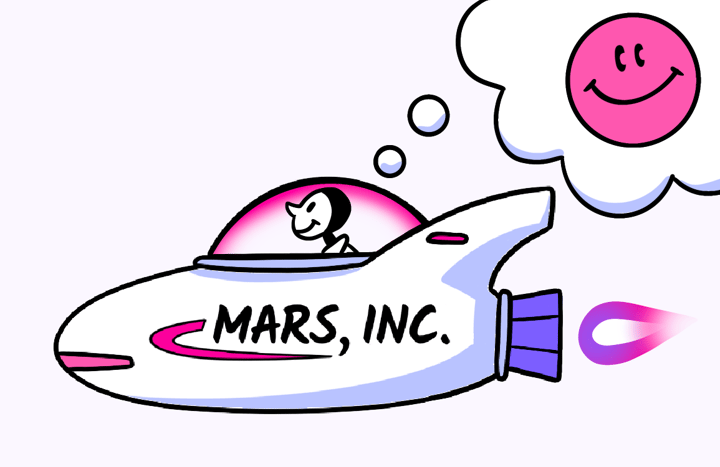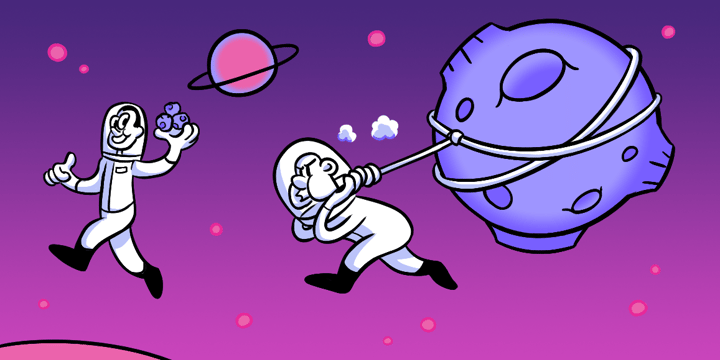Unlocking Success through the User Journey in UX Design
The Ultimate Guide to Understanding the User Journey. In the exciting world of user experience design, the user journey plays a crucial role in creating seamless and engaging experiences for users. By understanding the path users take when interacting with a product or service, designers can identify pain points, optimize the experience, and ultimately increase user satisfaction.
🔩 The Nuts and Bolts:
- The user journey maps a user’s interaction with a product. It outlines every touchpoint and step a user takes, from initial discovery to goal completion, helping to optimize design.
- User personas are key to mapping the user journey. By understanding different user types, designers can create a journey that addresses specific goals and expectations.
- User research drives the accuracy of the user journey map. Through interviews, surveys, and testing, designers gather insights to better understand behaviors and motivations.
- Analyzing user interactions reveals optimization opportunities. Tools like heatmaps and click-tracking show where users struggle, uncovering pain points to enhance the journey.
- Continuous iteration improves the user journey over time. By regularly updating personas, goals, and feedback, designers ensure the journey adapts to evolving user needs.
- Key performance indicators measure journey success. Metrics like bounce rates, time spent, and satisfaction scores help assess how well the journey supports users’ goals.
Defining the User Journey
Before we dive deeper into the importance of the user journey, let’s first define what it actually is. The user journey, also known as the customer journey or user flow, refers to the series of steps that a user takes to accomplish a specific goal within a product or service. It encompasses all touchpoints and interactions a user has with a brand, from their initial discovery to the final conversion.
Understanding this is like being a detective solving a mystery. Each step taken by the user is a clue that leads to a deeper understanding of their needs and desires. By unraveling the user journey, designers can uncover valuable insights that shape the design process and ultimately lead to a more satisfying user experience.
The Importance of User Journey in UX Design
Understanding is essential in delivering a user-centric design. By mapping out the journey, designers can gain insights into user behaviors, motivations, and pain points. This knowledge allows designers to create intuitive and engaging experiences that meet user needs and exceed their expectations.
Imagine the user journey as a roadmap guiding users through a digital landscape. Without a clear understanding of this roadmap, designers risk losing users along the way. By focusing on the user journey, designers can ensure that every interaction is purposeful and seamless, leading to increased user satisfaction and loyalty.
Key Elements
When mapping the user journey, there are several key elements to consider. These include the user personas, user goals and objectives, and the user path. User personas are fictional representations of different user types that help designers empathize with their target audience. User goals and objectives outline what users want to achieve within the product or service. The user path is a visual representation of the steps users take to accomplish their goals.
Each element acts as a piece of a puzzle that, when put together, forms a comprehensive picture of the user experience. By paying attention to these key elements, designers can tailor their designs to meet the specific needs and expectations of their users, ultimately creating a more personalized and impactful user journey.
Make your design decisions count.
Subscribe to Design Under Pressure. Get insights, UX metrics, and tools for bold, informed design.
We respect your inbox. Just insights. No fluff. Privacy Policy.
Steps to Mapping the User Journey
Now that we understand the importance of the user journey, let’s explore the steps to mapping it effectively.
Mapping the user journey is a crucial aspect of designing a seamless and user-friendly experience. By understanding how users interact with a product or service from start to finish, designers can identify pain points, optimize interactions, and ultimately improve user satisfaction.
Identifying User Personas
The first step is to identify and define user personas. By conducting user research and gathering data, designers can gain insights into users’ demographics, behaviors, and preferences. This information helps create accurate user personas that will guide the rest of the mapping process.
Creating detailed user personas involves going beyond basic demographic information. Designers should also consider users’ motivations, goals, and challenges to ensure a comprehensive understanding of their needs and expectations.
Setting User Goals and Objectives
Once the user personas are established, designers need to define the goals and objectives of each persona. What do they want to achieve? What problems are they trying to solve? By answering these questions, designers can align the user journey with user needs and expectations.
Setting clear and specific goals for each user persona is essential for creating a user journey map that addresses their unique requirements. By defining these goals, designers can tailor the user experience to meet users’ expectations at every touchpoint.
Sketching the User Path
With user personas and goals in mind, designers can start sketching the user path. This involves visually mapping out the steps users take to achieve their goals. It’s important to consider multiple touchpoints, such as website pages, app screens, and offline interactions.
When sketching the user path, designers should also account for different user scenarios and potential deviations from the ideal path. By anticipating user behavior variations, designers can create a more robust user journey map that caters to a wider range of user interactions.
UX Terms
Understanding User Behaviors and Motivations
Once the user journey is mapped, it’s crucial to delve deeper into user behaviors and motivations to optimize the experience further. Understanding why users behave the way they do and what motivates their actions is key to creating a successful product or service.
One aspect to consider when analyzing user behaviors is the concept of cognitive biases. These biases are mental shortcuts that influence decision-making and can impact how users interact with a product. By recognizing and addressing these biases, designers can create more intuitive and user-friendly experiences.
The Role of User Research
User research is an integral part of understanding user behaviors and motivations. By conducting interviews, surveys, and usability tests, designers can gain valuable insights into how users interact with the product or service. This data can then be used to refine and improve the user journey.
Furthermore, user research can help uncover unmet needs and pain points that users may not even be aware of. By empathizing with users and truly understanding their perspectives, designers can create solutions that address these underlying issues and provide a more satisfying user experience.
Analyzing User Interactions
Another way to understand user behaviors is by analyzing user interactions. Utilize tools like heatmaps and click-tracking to see how users navigate through the product or service. This information can reveal patterns, pain points, and opportunities for optimization.
Moreover, observing user interactions in real-time through methods like usability testing can provide valuable qualitative data. By watching how users engage with a product and listening to their feedback, designers can gain a deeper understanding of user behaviors and motivations, leading to more informed design decisions.
Optimizing the User Journey
Now that we have a solid understanding of user behaviors and motivations, it’s time to optimize the user journey for a seamless experience. A well-crafted user journey is crucial for ensuring that users can easily navigate through a website or application, ultimately leading to increased engagement and satisfaction.
One key aspect of optimizing the user journey is creating a user-centric design that focuses on meeting the needs and expectations of the target audience. This involves designing intuitive interfaces, clear navigation paths, and engaging content that resonates with users. By putting the user at the center of the design process, designers can create a more meaningful and enjoyable experience.
Identifying Pain Points and Opportunities
By utilizing the insights gathered from user research and analyzing user interactions, designers can identify pain points and opportunities for improvement. These may include confusing navigation, slow loading times, or missing features. By addressing these issues, designers can enhance the overall user journey. It’s important to conduct usability testing to validate these findings and ensure that the proposed solutions effectively address the identified pain points.
Furthermore, designers can leverage data analytics to gain deeper insights into user behavior and preferences. By tracking user interactions, heatmaps, and conversion rates, designers can pinpoint areas of friction in the user journey and make data-driven decisions to optimize the user experience.
Implementing Changes Based on User Feedback
User feedback is invaluable in refining the user journey. By listening to user feedback, designers can gain insights into areas that need improvement or new features that users desire. This feedback can then be used to drive continuous iteration and improvement. Implementing changes based on user feedback not only enhances the user experience but also fosters a sense of ownership and loyalty among users, as they see their input being valued and acted upon.
It’s essential for designers to establish a feedback loop with users, whether through surveys, user testing sessions, or feedback forms. This ongoing dialogue allows designers to stay attuned to user needs and preferences, ensuring that the user journey remains optimized and aligned with evolving user expectations.
Measuring the Success of Your User Journey Map
It’s important to measure the success of your user journey map to ensure its effectiveness. A user journey map is a visual representation of the steps a user takes to accomplish a specific goal on a website or application. By analyzing the user journey, designers can gain valuable insights into user behavior and pain points, ultimately leading to a more streamlined and user-friendly experience.
Understanding the success of your user journey map involves more than just creating it – it requires ongoing evaluation and optimization to meet the changing needs of users.
Key Performance Indicators for User Journey Maps
Key performance indicators (KPIs) provide measurable objectives for assessing the success of your user journey map. KPIs can include conversion rates, bounce rates, time spent on the website, and customer satisfaction scores. Monitoring these metrics allows designers to identify areas that require further optimization. For example, a high bounce rate may indicate that users are not finding the information they need, prompting a redesign of the user journey to improve navigation and content relevance.
Additionally, qualitative feedback from user testing and surveys can provide valuable insights into the emotional aspects of the user journey, such as frustration or delight. By incorporating both quantitative and qualitative data, designers can create a more holistic view of the user experience and make informed decisions to enhance it.
Continuous Improvement and Iteration
User needs and expectations are constantly evolving, and it’s important to keep iterating and improving the user journey. Regularly revisit your user personas, goals, and objectives to ensure they align with the ever-changing landscape of user behavior. By staying agile and responsive to user feedback, designers can adapt their user journey map to meet the evolving needs of their audience.
By understanding the user journey and continually optimizing it, designers can create user experiences that leave a lasting impression. So, embrace the power of the user journey and embark on a path towards creating exceptional user experiences.
User Journey FAQs
The user journey refers to the series of steps and interactions a user takes to achieve a specific goal within a product or service. It encompasses all touchpoints and experiences from discovery to conversion.
Mapping the user journey helps designers understand user behaviors, motivations, and pain points. This insight allows them to create more intuitive, engaging, and user-centered experiences.
Key elements include user personas, user goals, and the user path. These components ensure that designers understand who their users are, what they want to achieve, and how they interact with the product.
User research, including interviews, surveys, and testing, provides valuable insights into how users behave and what they expect. It informs the design of the user journey by highlighting pain points and areas for improvement.
Tools like heatmaps, click-tracking software, and usability testing can help analyze how users navigate a product or service. These tools identify problem areas and opportunities to optimize the user journey.
By continuously gathering user feedback through surveys or usability tests, designers can identify pain points and opportunities for improvement. Implementing changes based on this feedback helps refine and optimize the journey over time.
Success is measured through key performance indicators (KPIs), such as conversion rates, bounce rates, time spent on a page, and customer satisfaction. These metrics provide insight into how well the journey serves users’ needs.



